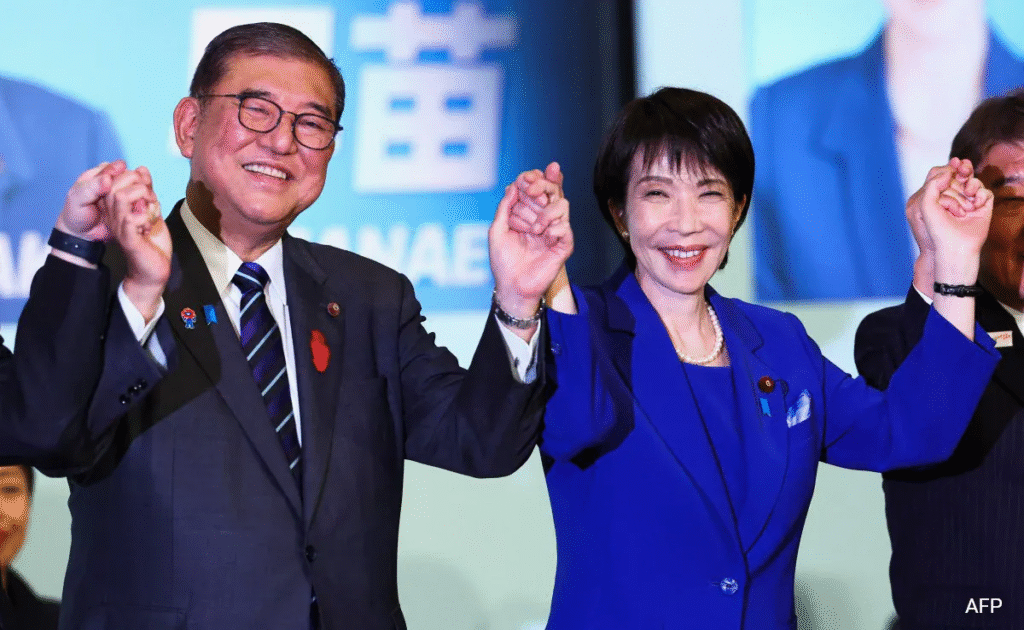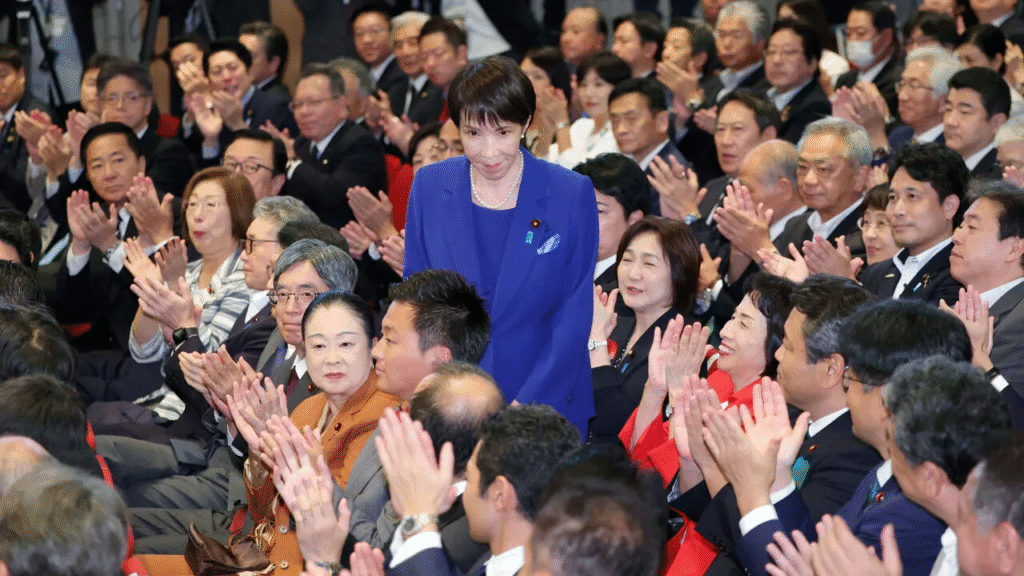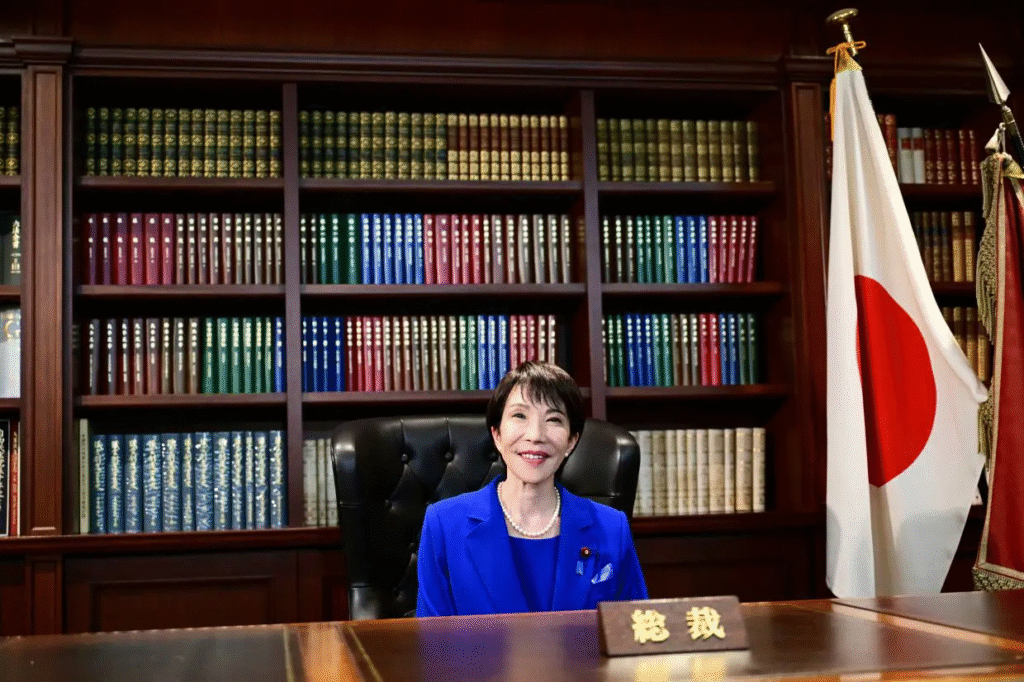Meet Sanae Takaichi: The Fearless Biker-Turned ‘Iron Lady’ Poised to Become Japan’s First Female Prime Minister in 2025
Sanae Takaichi, Japan’s bold “Iron Lady” and former biker, is emerging as the frontrunner to become Japan’s first female Prime Minister in 2025 — marking a historic shift in the nation’s political landscape
Tis the season for conservatism, with anti-immigration sentiment on the rise around the globe. Japan is no different. With Sanae Takaichi poised to take the reins of the island nation as its first woman Prime Minister, her firm stance on immigration, China’s military build-up in the Pacific, and her push to revisit a contentious post-World War II article that barred Japan from participating in future wars have hit home among voters.

Analysts see this as an attempt to win back voters who had shifted to the nationalist Sanseito party, which has gained popularity with its anti-immigration messaging, according to international news agency AFP. Her approach to immigration and crime is central to her political identity.
The 64-year-old leader, driven by a nation-first approach, is even ready to take the US head on if she believes that the ongoing trade deal is harmful or unfair to Japan. On Saturday, she won the ruling Liberal Democratic Party’s leadership election.
Once a drummer in a college heavy metal band, sporting pink hair and racing on two wheels, Takaichi gave up motorcycles when she entered politics.
She looks up to the late British Prime Minister Margaret Thatcher, nicknamed the “Iron Lady,” as her political hero.
A follower of the assassinated former Prime Minister Shinzo Abe, whom PM Narendra Modi called a “dear friend of India,” Takaichi enjoys strong backing among the conservative members of the LDP.
Her rise is closely tied to her connection with Abe, who appointed her to prominent party positions during his tenure.
On the economic front, Takaichi supports monetary easing and increased fiscal spending, echoing the “Abenomics” policies of her late mentor, former prime minister Shinzo Abe.
A regular visitor to the Yasukuni Shrine, which honours Japan’s war dead including convicted war criminals, Takaichi’s actions have drawn attention from neighbouring countries.
During the latest LDP leadership race, she softened her rhetoric compared to previous years, presenting herself as a “moderate conservative” to broaden her appeal.
Her leadership comes as the LDP faces challenges, including voter dissatisfaction over inflation and recent scandals.
Takaichi’s tough positions are intended to address concerns over economic security, crime, and foreign influence, reinforcing her image as a hardline leader.
Despite being a milestone for gender representation, analysts note that Takaichi is not viewed as a feminist candidate.

According to Sadafumi Kawato, professor emeritus at the University of Tokyo, her election “would be a step forward for women’s participation in politics” but she has shown little willingness to challenge existing patriarchal norms, reported AFP.
Takaichi’s views on gender issues place her on the right of an already conservative party. She opposes changes to a 19th-century law requiring married couples to share the same surname, a rule that mostly affects women. As Kawato commented, this issue “probably won’t be resolved during her term.”
However, Takaichi has pledged to improve gender balance in her cabinet to “Nordic” levels, referencing the higher representation of women in countries like Iceland, Finland, and Norway. Japan currently ranks low globally in terms of women’s representation in government.
In a country long dominated by male political powerhouses, Sanae Takaichi is breaking barriers and redefining leadership. Once known for her love of motorcycles and heavy metal music, the 63-year-old conservative politician is now on the brink of making history as Japan’s first-ever female Prime Minister. Her rise from a rebellious biker to a leading figure in the Liberal Democratic Party (LDP) symbolizes not just personal ambition but a cultural shift in Japan’s traditionally patriarchal political landscape.
Born in Nara Prefecture in 1961, Sanae Takaichi’s early life was anything but ordinary. She grew up fascinated by motorcycles, often seen riding through her hometown with her leather jacket and fearless spirit. Friends from her youth recall her as “determined, outspoken, and unafraid to challenge authority.”

After completing her education at Kobe University, Takaichi ventured into business before deciding that her real calling lay in politics. In 1993, she made her political debut as a member of Japan’s Diet, inspired by conservative leaders like Shinzo Abe, who would later become one of her strongest political mentors.
Her early years in politics were marked by resilience and controversy. Unlike many of her peers, Takaichi refused to play the quiet, deferential role expected of women in Japan’s political class. She stood firm on issues of national security, gender equality, and constitutional reform, quickly gaining a reputation as a no-nonsense leader — earning her the nickname “Japan’s Iron Lady.”
Takaichi’s political journey has been as bold as her personality. She served in various key positions, including Minister of Internal Affairs and Communications, where she championed digital reform, media transparency, and economic modernization.
However, her conservative views — especially her stance on Japan’s pacifist constitution and defense policies — have often drawn criticism from liberal factions. Takaichi has openly supported revising Article 9, which restricts Japan’s ability to maintain armed forces, arguing that “a strong Japan is a peaceful Japan.”
Despite controversy, she has built an image of uncompromising leadership, appealing to both traditional LDP loyalists and younger voters who see her as a symbol of national revival. “Japan cannot afford hesitation,” Takaichi once declared in a parliamentary debate. “Our people need courage, not apology.”
If elected, Takaichi would shatter Japan’s ultimate political glass ceiling, becoming the nation’s first female Prime Minister. In a society where only less than 10% of parliamentary seats are held by women, her rise represents a seismic shift.

Her leadership style blends discipline with defiance — a rare combination in Japan’s consensus-driven politics. Known for her rigorous work ethic, she begins her day before sunrise, personally reviewing policy briefs and defense reports. Her assertiveness has earned her both admiration and criticism, with some male politicians labeling her “too aggressive,” a term she dismisses with characteristic sharpness.
“I am not aggressive. I am focused,” Takaichi once said in a televised interview. “Japan has waited long enough for decisive leadership. It’s time for action.”
At the heart of Takaichi’s platform is a dual agenda — revitalizing Japan’s struggling economy and strengthening its defense capabilities. She advocates for advanced digital transformation, energy self-sufficiency, and reinvestment in semiconductor technology, which she believes is vital to counter China’s growing regional dominance.
On the defense front, she supports closer alignment with the United States and enhanced cooperation within the Quad alliance (Japan, India, Australia, and the U.S.). Her policies emphasize deterrence and resilience, with a pledge to increase Japan’s defense spending to 2% of its GDP — a historic move in line with NATO standards.
However, Takaichi also supports social reforms, including women’s workforce participation, childcare support, and education modernization. While her economic and defense stances are tough, she has voiced empathy toward working mothers and gender inequality, saying, “Empowering women is not about ideology; it’s about Japan’s future prosperity.”
Public opinion in Japan remains mixed but intrigued by Takaichi’s potential leadership. Polls conducted by NHK and Mainichi Shimbun show that nearly 48% of Japanese voters would support a female prime minister, provided she demonstrates strong governance credentials.
Younger voters see her as a refreshing alternative to Japan’s often bureaucratic leadership style. “She’s bold, confident, and unapologetically herself,” said a 28-year-old Tokyo professional. “Even if I don’t agree with all her policies, I respect her strength.”
Conversely, critics fear that her conservative nationalism could strain Japan’s relations with neighboring countries, particularly China and South Korea. Yet even skeptics admit her political acumen and discipline make her a formidable force.
As the LDP leadership race heats up, Sanae Takaichi stands as one of the strongest contenders. If she secures victory, it will not only mark a historic milestone for gender equality but also redefine Japan’s global image as a nation ready to embrace bold change.
Her journey from a motorbike enthusiast to Japan’s Iron Lady embodies resilience, transformation, and unwavering ambition. Whether admired or criticized, Takaichi’s rise underscores a profound truth: Japan’s next chapter may very well be written by a woman who refuses to slow down.








